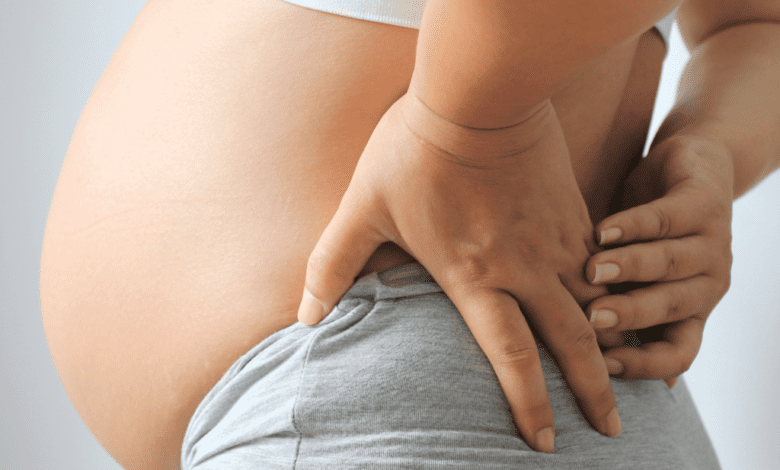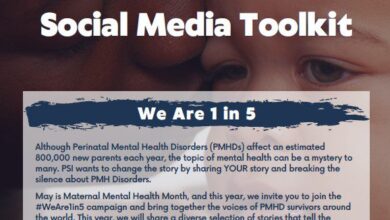7 Reasons for Postpartum Lower Back Pain (and What To Do)

Low back, tailbone, and sacroiliac pain can all occur after birth and throughout the postpartum recovery. Find out why this might be happening and how you can start feeling better now.
You may be experiencing low back, tailbone, or sacroiliac pain for a number of reasons, which we’ll review below. Fortunately, you can resolve pain using an integrative mind, body approach if interested.
Seven causes of lower back pain after birth and during the postpartum period
Keep reading if you want to know more about what causes your lower back pain after birth. Let’s take a closer look seven common reasons of experiencing back pain during postpartum recovery.
Remember that one, none, or many of these reasons could be the source of your pain, so it’s important to read them carefully and work with a doctor if needed.
Causes of postpartum lower back pain: at a glance
- Natural pregnancy changes
- Old physical trauma
- Physical birth trauma
- Getting an epidural
- Cesarean scar adhesions
- Dysfunction of the pelvic floor
- Lifestyle factors and considerations
1. Natural changes in pregnancy
During pregnancy and postpartum, the body changes.
There are as many subtle changes as obvious ones. These changes can stress the tailbone to compensate for the growing baby. This place is stretch and expand during birth to allow the baby to pass.
Can be a postpartum Yoga or Pilates teacher help you target these specific muscles and tighten stretched and weak areas. A pelvic floor physical therapist will be a great resource to get it all back.
2. Old physical trauma
Unhealed or old trauma like a dislocation or fracture (from horseback riding or falls) can be re-triggered after pregnancy and childbirth.
3. Physical trauma of childbirth
The pelvic floor will change from both vaginal birth and cesarean delivery. During vaginal birth, the the muscles and ligaments must be stretched to allow the baby to exit the birth canal.
It can damage the low back, sacrum, and coccyx. If these muscles are overstretched or uneven, it can lead to illness. Changes to low back and sacrum still happens with a c-section.
4. Getting an Epidural
Epidurals are related to low back pain after birth because the epidural numbs the body’s ability to feel. This disconnects the body from its ability to make changes as labor progresses.
If you believe the cause of your back pain is from old trauma, birth trauma, or an epidural, working with a chiropractor, acupuncturist, and pelvic floor therapist will be very useful.
Find someone whose prenatal/postpartum body suits you and who you feel safe working with. Most women are rrespond within one to four sessions of chiropractic adjustments and soft tissue work.
Acupuncture can help increase blood flow to the small and delicate muscles and bones of the low back. Pelvic floor physical therapy will help to shorten overstretched muscles and strengthen weak muscles.
5. Scar tissue adhesions
C-sections are major abdominal surgeries, and Adhesions may form at the incision. This can pull internal muscles and cause pain in the upper and lower back.
To help prevent adhesions, massage your stomach and Gua Sha your c-section scar. This is help loosen adhesions and reduce pain. A scar rejuvenation kit will contain everything you need to do and support your cesarean scar.
6. Dysfunction of the pelvic floor
Most women begin their pregnancy with pelvic floor dysfunction or a lack of pelvic floor muscular tone. After birth, the pelvic floor is stretchedand the feedback (or your ability to connect with them) will be weak.
Pelvic floor dysfunction can lead to
Work with a pelvic floor therapist to reconnect with the pelvic floor and begin with increase muscle tone. If the cause of your back pain is due to loose pelvic floor muscles, exercise is necessary.

7. Lifestyle factors and considerations
We live in a fast-paced culture that does not support our spine and pelvis. Most people who give birth find theirs posture is out of alignment. Over time this can lead to back pain after sitting.
During pregnancy, the the spine will move to make room for the growing baby. If you notice your back pain after activity or sitting, it may be because your spine is out of alignment.
To correct this discomfort, you will need rrecruit your glutes, legs, and abs for movement than the low back. Work with a pilates instructor and a postpartum yoga and breathing teacher.
These skills will help you maintain proper spinal alignment while doing housework, walking, picking up your baby, and breastfeeding. Your body will stop overusing the low back for support and build strength in other areas.
How do you get rid of lower back pain after pregnancy?
First, identify the root cause of your illness. That will make it clear what your next steps are.
Once you’ve narrowed down the causes, the second step is finding a qualified postpartum practitioner to support your recovery. Working with chiropractic, acupuncture, and pelvic floor PT can support and help you better analyzed and understood why are you hurt
Pilatesgentle yoga, and targeted breathing exercises all will support you in realigning, strengthening, and tightening the muscles of the low back and pelvic floor. Some also believe in the power of Yoni is steaming to help support recovery after birth.
If you have a C-section, remember that notice your scar through gentle Gua Sha and massage is essential to help loosen adhesions and reduce pain and sensitivity in general.
Other supporting articles you may enjoy
Hello Postpartum participates in the Amazon Services LLC Associates Programan affiliate advertising program designed to provide a way for sites to earn advertising fees by advertising and linking to Amazon.com.






